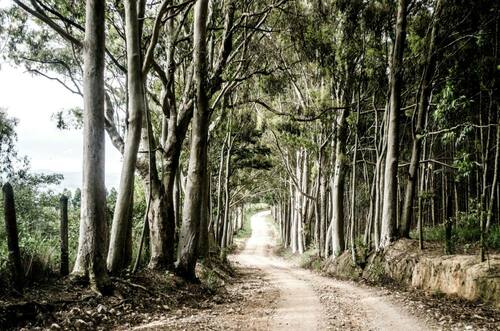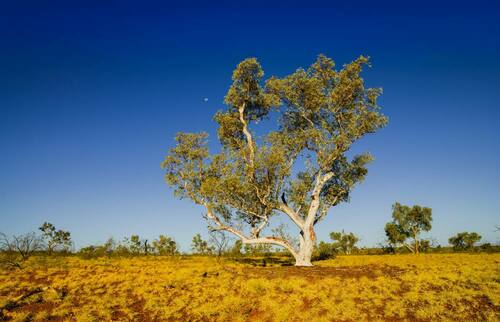Eucalyptus: Non-Native Friend or Foe?
Introduction
You don’t have to be a koala bear to appreciate the beauty of the eucalyptus tree. Add a eucalyptus to your landscaping and you’ll take your home’s perimeter to the next level. However, there are mixed opinions about eucalyptus trees, with some insisting they are harmless while others arguing they are a nuisance.
Is the Mysterious Eucalyptus a Friend or Foe? That is the Question
It is no secret that the eucalyptus tree is not native to the California terrain. However, a quick drive around your neighborhood and nearby residential zones is sure to turn up at least one stunning eucalyptus. The eucalyptus, native to Australia, has quickly become synonymous with the Golden State’s landscape. Long-time California residents are quick to testify that the eucalyptus is nearly ubiquitous throughout the entirety of the state.
First introduced to California back in the late 19th century, the original purpose of the eucalyptus was to serve as a temporary fix for the nation’s lack of hardwood. The hope was that the rapidly-growing eucalyptus would generate sufficient timber within a decade or two. The idea spread like wildfire with land barons purchasing eucalyptus trees to plant throughout the entirety of the region.
Though few know it, the Pacific Railroad planted a plethora of eucalyptus trees hoping it would flourish to the point that it could meet the entirety of the demand for new railroad timber necessary for railway ties. Reality turned out a bit different as eucalyptus wood proved unreliable, providing minimal utility in commercial and industrial applications.
Millions of eucalyptus trees were planted only for lumber production to eventually slow when it was determined the trees were not suitable for use as railroad ties. Blue gum eucalyptus wood often cracked, split and twisted to the point that it couldn’t withstand the weight of trains. Moreover, wood derived from the trees could not be sufficiently treated for use in furniture production.
Eucalyptus was used for the construction of San Francisco’s Pier Bay yet the tree’s primary utility came in the form of landscaping aesthetics. Though there is the potential for pest infestations to compromise eucalyptus tree health and pose a slightly higher fire risk than other landscaping additions, the tree is otherwise flawless. The little-known truth is some of the eucalyptus trees dotting California landscapes are century-old vestiges.

Several Eucalyptus Trees Illuminated by a Sunset – Photo by Bethany Zwag on Unsplash
A Landscaping Beauty with Minimal Downside
The eucalyptus adds a three-dimensional twist to landscaping that tends to be two-dimensional. Complement your existing mulch and shrubs with a eucalyptus tree or two and you’ll greatly enhance your property’s visual appeal. Often described as graceful, beautiful and non-aggressive, the eucalyptus is the highlight of most home landscaping perimeters.
In particular, locals rave about the eucalyptus blue gums. The blue gum variety of the tree is characterized as limited invasive, meaning the root systems will not wreak havoc on your property. Blue gum eucalyptus bark sheds in lengthy strips that create lovely smooth surfaces with color contrasts. A mature blue gum’s leaves are often a combination of green, gray and blue with a wax-like surface and eye-catching sickle shape. In contrast, the tree’s immature leaves are shaped similar to an oval with a green-blue hue and a square-like shape.
Eucalyptus trees provide value beyond aesthetics. These large trees offer much-needed shade during those blazing hot summer months, helping to cool hot and dry California homes. Plant a John Muir eucalyptus on your property and you’ll find they jive perfectly with the area’s complex and delicate native ecology.
We would be remiss to gloss over the potential downsides to the addition of a eucalyptus tree. Critics of those who use the eucalyptus in California landscaping highlight the fact that the tree is fire-prone. After all, California is notorious for its droughts that often lead to wildfires , some of which spread to residential spaces.
Locals remember the East Bay fires of the 1990s that were partially caused by burning eucalyptus trees. The trees’ ensuing “fire bomb” reputation is somewhat justified though the potential for flammability is a very slight downside that is greatly outweighed by its striking aesthetic beauty. The captivating allure of the eucalyptus has inspired local governments including those in Irvine and Burlingame to invest extensive time, money, and effort in preserving these towering beauties for posterity’s sake.

Eucalyptus Bark Collects on a Forest Floor – Photo by Myrtle Schilling on Unsplash
A Eucalyptus Probably Won’t Set Your Home on Fire
Let’s directly address the elephant in the room: eucalyptus safety. There is a common misconception that eucalyptus trees have the potential to cause a homeowner’s yard or home to burn. Though some eucalyptus trees shed bark that has the potential to be flammable, it is primarily the eucalyptus that grow in wild canyons with flammable detritus along the base that are most likely to catch fire.
Properly maintain your new John Muir eucalyptus and you’ll find it doesn’t pose the same level of threat as occurs with the trees located in arid canyons. Eucalyptus maintenance centers on moisture levels. Adequate moisture creates fire resistance. Contrary to common opinion, a small amount of water goes a long way.
Eucalyptus maintenance also entails bark removal. If you notice your eucalyptus is peeling bark, collect that bark and promptly dispose of it. Such bark tends to be quite lengthy, meaning it has the potential to burn from the bottom upward, all the way to the crown of the tree.
The Butterfly Magnet Every California Property Owner Can Appreciate
If you are like most homeowners and nature lovers, you enjoy the sight of gorgeous butterflies. Blue gum eucalyptus trees serve as an overwintering attraction for monarch butterflies. Butterflies are drawn to this non-native habitat, oftentimes preferring them to native habitats.
Plant a blue gum in your yard and you’ll find it serves as a strong monarch butterfly magnet, especially during the overwintering season. Though the tree also has the potential to produce nectar that draws in bees, the risk is well worth it considering the equal chance of an appeal to visually striking monarch butterflies .
Position your new blue gum within view of a window and you’ll inevitably spot several monarchs fluttering about in the winter months, providing a natural and wholesome source of entertainment the entire family can enjoy.

A Path Lined with Eucalyptus Trees – Photo by William Carletti on Unsplash
Are Eucalyptus Trees Self-Reproducing?
If you were to poll California homeowners with landscaping highlighted by eucalyptus trees, you would find most testify that their blue gums generate seeds within wood capsules. However, the trees’ germination rates are fairly low. The blue gum’s asexual reproduction typically ramps up in the months of November through April.
Blue gums tend to flower during the winter and spring months when moisture is present. The resulting fruit, a woody capsule, subsequently ripens in the fall and spring. Blue gum seeds tend to be on the small side, meaning they won’t pose a direct threat to your home’s integrity nor that of your surrounding landscaping features.
Plant a blue gum on your property and you’ll find it remains relatively confined, growing upright without infringing on nearby spaces. Though the blue gum generates seeds, germination tends to yield little meaningful output unless it occurs on bare mineral soil with the proper illumination. Moreover, blue gum eucalyptus trees form allelochemicals, meaning natural substances that prevent continued seed growth and ultimately inhibit unstoppable germination.
The seeds generated from your blue gum tree under natural conditions have the potential to germinate and grow though that window of opportunity is brief, typically constituting a year or less. If you find your blue gum tree’s vegetative reproduction creates an invasive force, it is in your interest to control that infiltration or completely removing it right away.
Be aware that there is the potential for blue gum trees to readily grow from stumps of all ages and sizes. The root crown that swells below the ground or at its surface has the potential to live for years within the soil even after the stems perish. Moreover, the cutting of a tree can prompt the activation of blue gum lignotubers, creating buds that generate offshoots that prove more challenging to contain than the original tree. Such re-sprouting is especially common after cutting.
Blue gum seed dispersal occurs as the result of gravity and naturally occurring winds. Seeds rarely extend beyond a 60-foot radius unless the tree towers 100+ feet in the air. However, if the winds pick up, there is the potential for an especially tall blue gum to spread its seeds more than 60 feet from the point of origin. Homeowners with property near rivers, streams and other sources of water should also be aware that their blue gum trees’ seeds can be transmitted by water across vast distances, using water current as a source of transportation.
Recognize the Potential for Root Growth
The roots of your newly-planted Eucalyptus tree won’t present an immediate threat to pipes, buried electrical lines and minimal groundwater. Though the eucalyptus tree is likely to tap into groundwater deep below the surface of the earth, potentially 100 feet below the trunk, it will take time for roots to move that far down below the surface.
The tree’s deep roots are most likely to extend far downward in conditions where there is extensive soil. Massive eucalyptus roots have been found 45 feet below the surface and 100 feet away from the trunk. However, such extensive growth is the exception, meaning most eucalyptus tree root systems are unlikely to penetrate beyond a depth of 10 feet.
The bottom line: as long as your eucalyptus is not planted near water pipes, cisterns, ditches and wells, its root growth probably won’t pose a problem.

A Eucalyptus Tree Graces a Desert Landscape – Photo by Chris Stenger on Unsplash
Do Your Homework Before Adding a Eucalyptus
According to the California Invasive Plant Council , or Cal-IPC for short, some eucalyptus trees are invasive. The Cal-IPC has formally declared that the trees are moderately invasive after first planting, creating the potential for negative environmental impact. In particular, the blue gum variety of the tree has the potential to demonstrate invasive characteristics.
Cal-IPC’s 2015 reexamination of the trees led to a downgrade of the blue gum to limited invasive categorization. Based on the organization’s nuanced criteria, invasive status that is limited is the result of the species being widespread without causing a meaningful negative impact or, alternatively, causing meaningful negative ecological impact throughout the state or region. Cal-IPC specified that the blue gum eucalyptus has the potential to spur significant ecological impact, specifying that such impact is most likely to occur in areas along the state’s coast.
Homeowners should also be aware of county and town ordinances that protect eucalyptus trees, sometimes classified as heritage trees. There is the potential for a fine to be imposed after cutting a eucalyptus tree without the proper permit. Do your due diligence, researching local ordinances pertaining to eucalyptus trees and landscaping before adding to your home’s perimeter and you’ll move forward in full confidence.
In conclusion, while the eucalyptus tree offers both charm and challenges, it is undeniable that proper care and informed choices can enhance your landscape’s beauty without undue risk. Whether you’re considering adding a eucalyptus to your property or need advice on maintaining existing trees, professional guidance is crucial. At Arborist Now , we provide expert tree care advice tailored to California’s unique ecosystem. Call us today to learn how we can keep your trees and outdoor space safe, stunning, and thriving.


